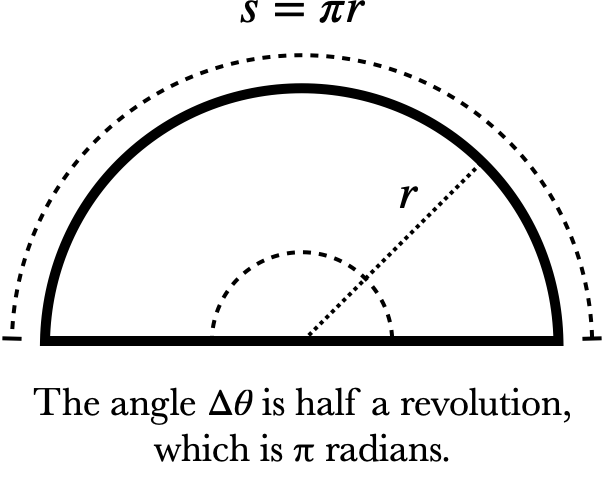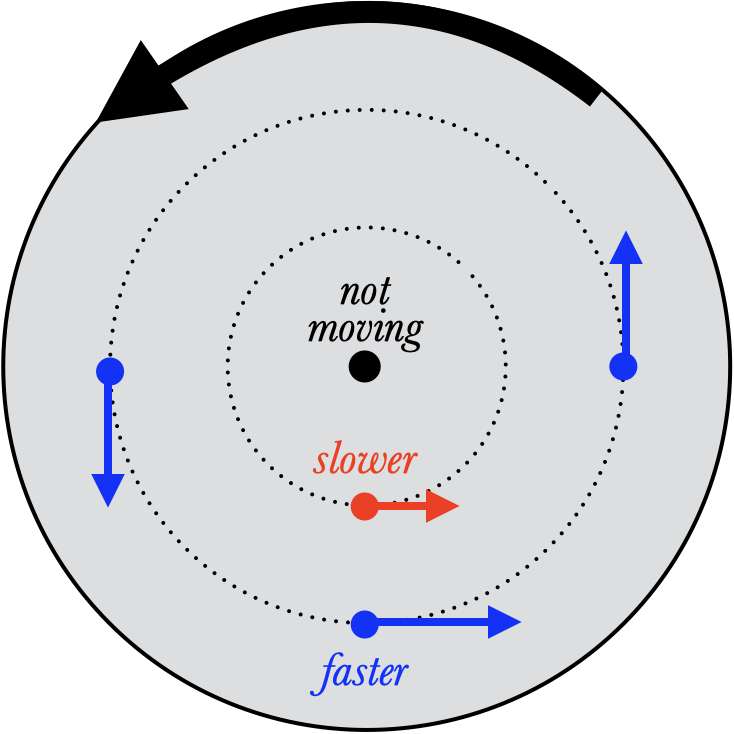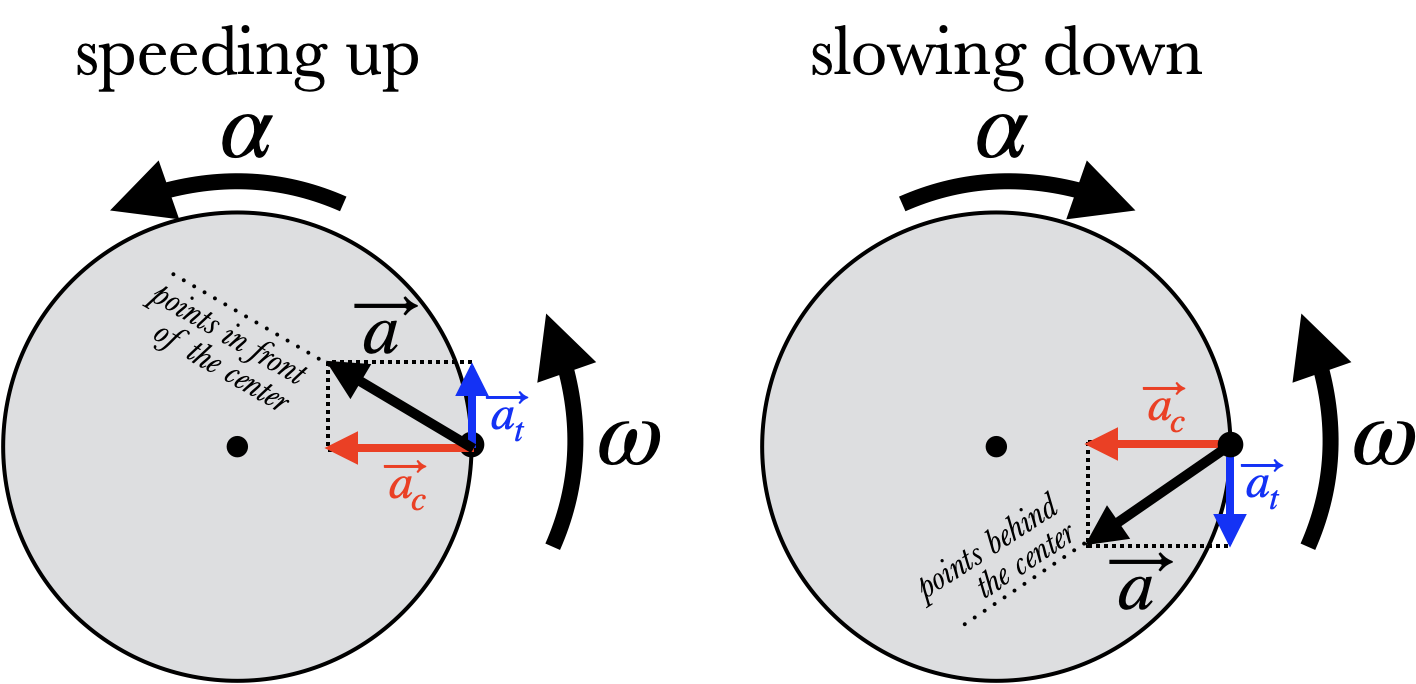Linear & Angular Motion
When you sit on a spinning merry-go-round, not only are you spinning around its axis, you are also moving through space: you have both a linear velocity v as well as an angular velocity $\omega$. The two quantities are related: the faster * the merry-go-round spins, the greater your linear velocity. Let's see how.
We've mentioned how much mathematicians and physicists love to measure angles in radians, but at first glance it seems like a weird choice: why should one complete revolution be equal to 6.2831853... radians? Why bring $\pi$ into it? The reason is this: if you consider a portion (or "arc") of a circle with radius $r$, and the arc spans an angle $\Delta\theta$, then the length $s$ of the arc is
Example

Consider a semicircle with radius $r$. It spans half a complete revolution, and so its angle is $\Delta\theta=\frac12(2\pi)=\pi$. The length of the semicircle is thus $s=r\Delta\theta=r\pi$. Since the circumference of a full circle is $2\pi r$, it makes sense that the length of a semicircle is half of that. Obviously this wouldn't work in degrees: the length of the semicircle can't be $3.14159r$ and $180r$ at the same time!

Now consider a wheel that is spinning with a constant angular velocity $\omega$ counterclockwise, and think about a point on that wheel which is a distance $r$ from the center. If the wheel spins for a certain time $\Delta t$, then the point will travel through an angle $\Delta\theta=\omega\Delta t$ according to the definition of Angular Velocity. Because the point is moving in a circle with radius $r$, it thus travels a distance $d=r\Delta\theta = r(\omega\Delta t)$ in time $\Delta t$, and so the point's linear velocity is $$v={\text{distance}\over\text{time}}={d\over\Delta t}={r\omega\Delta t\over\Delta t}$$

Notice that the $r$ is the distance of the relevant point from the axis, not the radius of the wheel itself. Different points on the wheel move at different speeds: the point farthest from the axis moves the fastest, while the center doesn't move at all (because $r=0$ there).
Linear and angular acceleration are also related, but the connection between them is a little more complicated. Remember that the velocity of an object in Uniform Circular Motion is always perpendicular to the radius: even if the speed is constant, the velocity is always changing direction, and so it always has a linear acceleration $a_c=\frac{v^2}{r}$ towards the center of the circle: the "$a_c$" stands for centripetal acceleration because it points towards the center. If the object starts spinning more quickly, however, then the object will also have a tangential acceleration $a_t$ which points in the same direction as the object's velocity; conversely, $a_t$ points in the opposite direction of the velocity if the spin is slowing down. The tangential acceleration is related to the angular acceleration:

The total acceleration of the object is the sum of these two quantities as vectors:
The acceleration will always point towards the center, more or less, but if the object is speeding up, then the acceleration vector points ahead of the center; while it points behind the center if the object is slowing down (as is shown in the figure).